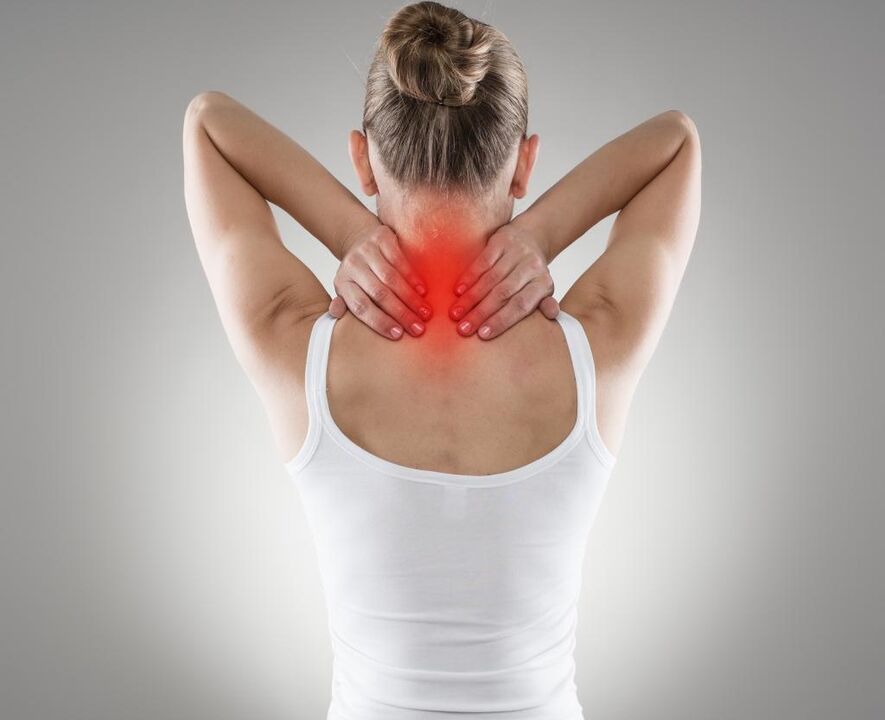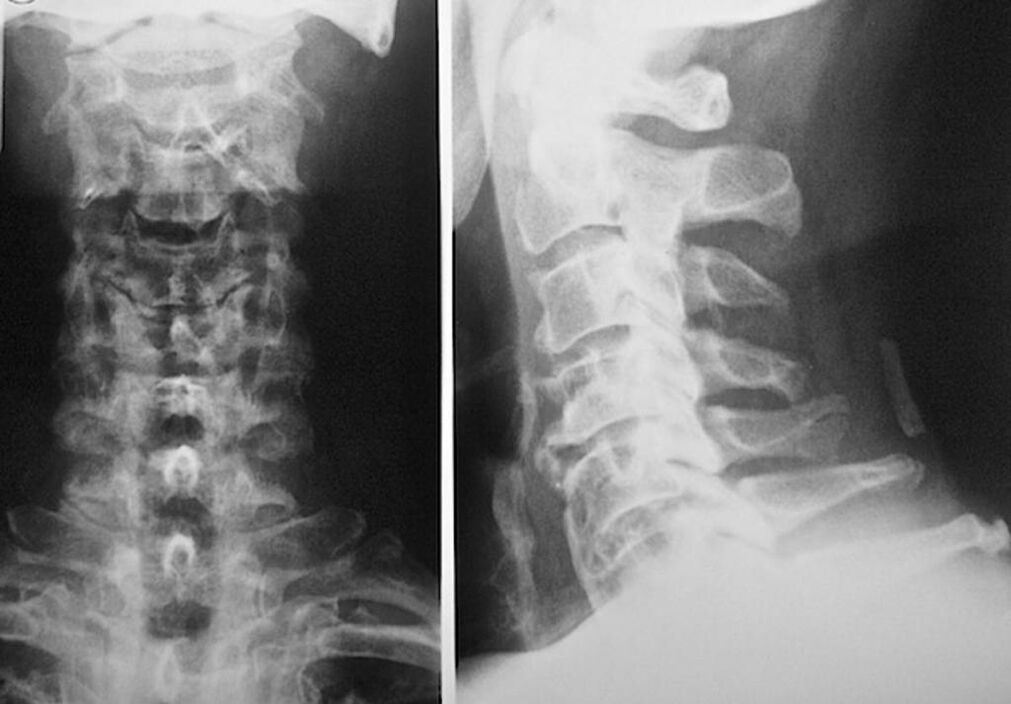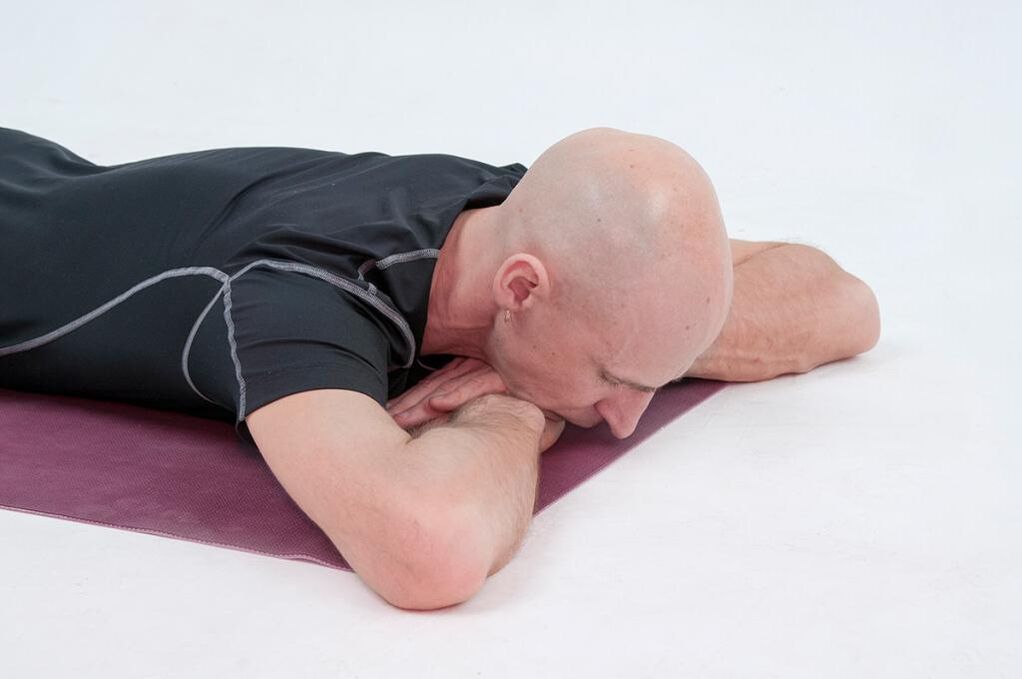
Osteochondrosis - a degenerative change in the articular cartilage, accompanied by partial destruction of the intervertebral disc. Cervical osteochondrosis is characterized by slow, progressive over many years, destruction of the tissue between the vertebrae that supports the head. If in the last century the disease was diagnosed mainly in people aged thirty years and older, today orthopedic specialists make such a diagnosis even for school children. The treatment of cervical vertebral osteochondrosis is lengthy. Even during the remission period, a course of maintenance therapy should be taken.
Symptoms of the disease in the early stages
The size of the cervical vertebrae is smaller than in the thorax and lumbar. But the load on them is significant: every day a person's neck performs a lot of complex movements. Office workers who are forced to sit in the same position in front of a computer for hours in a row often suffer from cervical vertebral osteochondrosis. Treatment in this case involves not only the removal of pain, but also mandatory changes in lifestyle. Sitting inactive for hours at a monitor is a big test for the spine.
The following causes of cervical vertebral osteochondrosis can be distinguished:
- descent;
- sedentary lifestyle;
- extreme physical activity;
- neck injuries;
- cervical spine anomalies;
- incorrect body position persists during sleep.
Orthopedics and neurology distinguish four stages of the disease. In the first two, the disease does not cause severe pain, but it cannot be ignored.
In the first stage, the disease manifests itself as a frequent headache, a slight pulling sensation in the neck. Almost all patients do not pay attention to these mild symptoms. Headaches are associated with fatigue or lack of sleep. Most patients prefer to take analgesic tablets alone.
Over time (sometimes this process can last for several years), the disease inevitably progresses to a second stage. The danger of osteochondrosis is that the so -called radicular syndrome often develops. Often, it manifests itself in the second stage and worsens as osteochondrosis develops. Radicular syndrome is a nerve end that is pinched in the cervical vertebrae. Subsequently, many other pathologies accompany the headache. These are deterioration in vision and hearing, dysfunction of the vestibular apparatus, unbearable migraines with and without aura, numbness of the hands.
As a rule, patients go to the doctor only after the manifestation of radicular syndrome. Most of them are just worried about the symptoms. Treatment of cervical vertebral osteochondrosis and the necessary rehabilitation will not be able to neutralize all the consequences brought on by radicular syndrome. You can only temporarily stop the progression of the disease and prevent larger complications.

Manifestations of the disease at a later stage
There are also third and fourth stages of the disease, which are impossible not to notice. Even patients who abruptly neglect their own health sound the alarm and go see a doctor.
The third stage of cervical osteochondrosis, if it is not accompanied by radicular syndrome, brings the patient a very painful headache. Characterized by the appearance of pain directly in the neck and shoulders. Patients had to use ointments with warming and analgesic effects continuously. Massage helps well in the third stage. It is important to understand that it will not work to get rid of the disease completely. Only long -term remission can be achieved - this is the goal of treatment.
Symptoms of cervical vertebral osteochondrosis in the fourth stage: marked tilt of the spinal column with rough eyes and severe pain in this area. If there is also a radicular syndrome, then the patient often experiences very severe dizziness, possibly fainting after he makes one or another sharp physical movement. Depending on where and how badly the nerve end is pinched, serious deterioration in vision or hearing may occur.
In the final stages, the emergence of irritation-reflex syndrome is also possible, in which there is frequent severe pain in the back of the head with a throbbing nature, as well as pain descending to the thoracic spine. They can reach such strength that the patient cannot sleep or perform normal body movements. Such symptoms are also possible with strong vertebral displacement. End -stage cervical osteochondrosis in 90% of cases is accompanied by either an irritating reflex or radicular syndrome.
There are cases when the disease is complicated by two of these pathologies at once. In this case, treatment of osteochondrosis of the cervical vertebrae with folk remedies will not work. An integrated approach is essential, which involves the use of both specific methods (injections, massage, physiotherapy, taking analgesics) and general ones (swimming, exercise therapy, lifestyle).

Symptoms depend on the damaged nerve root
Osteochondrosis of the first cervical vertebra is accompanied by numbness in the occipital region in the early stages of disease development. At a later stage - the appearance of severe pain in this area. The best treatment is the use of ointments with a warming and anesthetic effect, as well as massage. Every six months, it is necessary to inject a preparation of B group vitamins.
Osteochondrosis of the 4th and 5th cervical vertebrae is accompanied by a violation of limb sensitivity and the appearance of pain in the forearm, thoracic region. Treatment - massage of the cervical collar zone and numb parts of the body. Regular consumption of B vitamins on a continuous basis is indicated (at least once every six months, optimally once per quarter). Physiotherapy is also effective.
Osteochondrosis of the 6th cervical vertebra is accompanied by pain in the shoulders and neck. Frequent headaches. Vision may begin to decline - myopia and astigmatism develop. The principle of treatment is the same as in the case when other vertebrae are affected. Just with the same symptoms - vision and hearing impairment - you need to pay attention to it as well. Always engage in visual hygiene, do eye exercises, plant special drops that relieve the optic nerve.
Osteochondrosis of the 7th cervical vertebra is accompanied by damage to nerves ending in the fifth, sixth and seventh vertebral regions. It occurs in men and women of any age. This is the most common osteochondrosis of the cervical vertebrae. Symptoms of pinched nerve endings C6 and C7 are periodic numbness in the fingers and hands, pain in the neck, forearms and lower extremities - shoulder blades, back, up to the lumbar.
Diagnosis of osteochondrosis: which doctor to contact
To diagnose and prescribe a course of treatment for cervical vertebral osteochondrosis, you should register to consult with a neuropathologist and orthopedic specialist. A neurologist can prescribe medication for the manifestation of the disease, which affects the condition of the nerve endings. This makes sense if the disease is accompanied by radicular syndrome. The orthopedic specialist will assess the condition of the spine and diagnose the presence of additional diseases: scoliosis, lordosis, etc.
For accurate diagnosis and assessment of the condition of the intervertebral disc, the following research methods are used:
- Radiography.
- CT scan.
- Magnetic tomography.
- Ultrasound scanning of the cervical canal.
Each of them is completely safe for health and does not carry any threat of excessive exposure. The diagnosis of osteochondrosis of the cervical vertebrae, the treatment of which will be carried out throughout life, can be carried out after a simple visual examination. Any orthopedic specialist can do this easily. The exception is the first stage of the disease, when no visible pathology in the cervical region is observed.

Traditional medical treatment methods
How to treat osteochondrosis of the cervical vertebrae? Whatever method is chosen, it should be remembered that in order to achieve remission, you need to constantly monitor the condition of the neck. Osteochondrosis cannot be completely cured. After a while, the symptoms will definitely be felt again, and their intensity directly depends on the patient’s attitude towards their own health.
The following is a list of the most effective steps to get rid of the symptoms of osteochondrosis:
- physiotherapy;
- cervical collar zone massage;
- taking analgesics;
- group B vitamin courses;
- physiotherapy;
- Swim.
The patient must remember that he should not engage in sports (running, jumping, plyometric training), strength fitness. This will definitely exacerbate the situation. You cannot sit in one position for long periods of time. Although office work involves a long time on the monitor, once an hour you need to get up and give yourself a ten -minute warm -up of the neck collar zone, a light stretch.

Complex physiotherapy exercises for cervical osteochondrosis
Treatment of osteochondrosis of the cervical vertebrae at home can be done with the help of special exercises. They must be done daily, otherwise significant results cannot be expected.
- Stand up straight, in line. Raise your arms, inhale, get up with your toes and stretch as much as possible. Do some repetitions.
- Starting position - standing on your feet, back straightened, arms lowered freely along the body. Touch the left ear to the left shoulder, the right ear to the right shoulder. Perform ten times in each direction at a slow pace, without making sudden movements.
- The starting position is the same as in the previous exercise. Touch your chin to your sternum, then gently and gently tilt your head back. If the movement is accompanied by pain or discomfort, it should be abandoned.
- Sit on a chair or on a hard floor with your back straight. You can cross your legs in the lotus position. Perform a circular rotation of the head - first clockwise, then counterclockwise.
- Lie on the hard floor on your stomach. Hands and feet are lengthened. "Boat" exercise: tear the surfaces of the head, arms and legs and try to raise them as high as possible. Stay in this position for as long as possible. This exercise is useful not only for the cervical spine, but also for the thorax and lumbar.
Physical therapy training should be done carefully, at a slow pace. Sudden movements can cause an increase in pain.
If it is possible to do exercise after a therapeutic warming massage of the cervical -collar zone - wonderful. How to combine two methods of treatment at once is very good.
Restriction of pain syndrome in osteochondrosis of the cervical spine
The main group of drugs used in the treatment of cervical osteochondrosis with vertebral displacement are nonsteroidal anti-inflammatory drugs (NSAIDs). Moreover, in connection with cervical osteochondrosis, local use of NSAIDs in gels and ointments is preferable.
In this case, ointments and creams with snake and bee venom in the composition are effective. Among the means for local external use, local irritants and chondroprotectors are indicated.
If the pain is too severe, strong analgesics can be used. Sometimes osteochondrosis is exacerbated by the common cold. In this case, to eliminate all the symptoms of acute respiratory viral infections and chondrosis, drugs based on the active ingredient paracetamol will help.
The use of B vitamins in the traditional therapy of this disease
Why do neuropathologists always prescribe B group vitamins as part of the complex treatment of cervical vertebral osteochondrosis? The description is very simple. With radicular syndrome, nerve endings suffer, and vitamins are the easiest way to support its function. The most effective form of application is intramuscular injection. When taken orally, B vitamins are only partially absorbed. When given intramuscularly, they almost immediately enter the bloodstream.
Treatment of cervical vertebral osteochondrosis at home
For complex treatment, there is absolutely no need to go to the hospital. It is quite possible to achieve forgiveness at home. It is very good if the patient can inject freely. Then you can not every day at the clinic.
Methods for the treatment of osteochondrosis of the cervical vertebrae with folk remedies:
- Bathing with salt and soda brings pain reduction, relaxation of the whole body. This is very good before bed. You need to take a full bath with medium temperature water and dissolve one kilogram of salt and about 500 grams of soda in it.
- Paraffin application is very good. Melt paraffin or wax, cool to a comfortable temperature and apply on the damaged area. Such compression can be done 2 times a week.
- To reduce the inflammatory process, you can take a decoction of herbs. You need to mix 1 tbsp. l. St. John's wort flower. John, chamomile, marigold and yarrow. To them add 1 tbsp. l. thyme and dandelion leaves. Now you need to take 2 tbsp. l. the resulting mixture and pour a liter of boiling water, insist. For 3 weeks, enough to take a decoction of 1/4 part glass 3 times a day.
- If you do not trust pharmaceutical preparations, you can prepare an ointment for the treatment of cervical osteochondrosis. You need to take coriander, birch buds, dandelion root, mint grass in equal parts. Grind three tablespoons of batter into a powder, pour 1/2 cup boiling water and simmer for 5 minutes. To the resulting mass add 75 g of vegetable oil and lard. Cool and rub into the affected part 4 times a day. Store the ointment in the refrigerator.
- Good help with osteochondrosis and compresses. For example, from honey and potatoes. Grate one large tuber on a fine grater and mix with honey in a ratio of 1: 1. The resulting mixture is applied on the affected area for 45 minutes.
With osteochondrosis of the cervical vertebrae, massage is the No. 1 remedy. 1 to reduce tension and pain. To do massage therapy for yourself, you need good flexibility. Older people are often unable to raise their hands to the desired height. But they found a way out of the situation: they asked one of the younger brothers for a massage.

Patient feedback on therapy outcomes
According to many reviews of orthopedic patients and neurologists, the optimal method of treatment is the use of all procedures in combination. It is useless to use only methods of treating osteochondrosis of the cervical vertebrae with folk remedies.
Some patients note that a course of procedures with a good massage therapist really revives them, their work capacity increases.
Some patients respond positively exclusively to physiotherapy exercises. They started exercising regularly at home, buying pool subscriptions for therapeutic swimming courses. Yoga and regular exercises to stretch the spine have helped some people. Feelings after the asana such as: lightness in the body, absence of pain, relief of stress.
If you regularly load your body with activities like this, you can enter long -term remission and forget about the symptoms of cervical spine osteochondrosis.



















